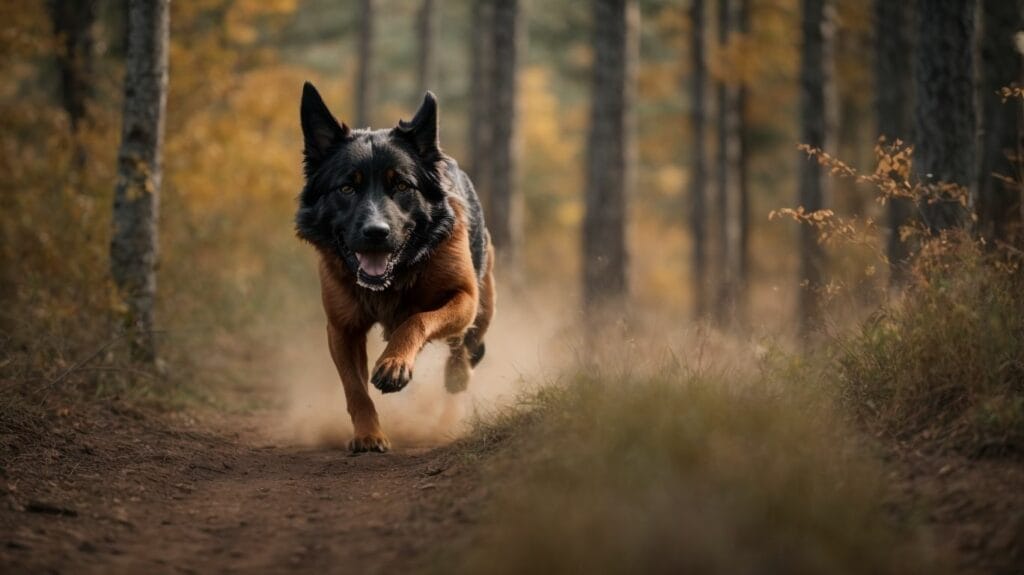Dogs have long been known for their keen sense of smell, and their ability to detect various scents is truly remarkable. One intriguing question that often arises is whether dogs can smell fear. This article explores the fascinating topic of whether dogs can detect fear in humans.
First, we will delve into the science behind dogs’ sense of smell and understand how sensitive their olfactory system is. We will explore the specific mechanisms that enable dogs to detect various scents and how their brain processes this information. Understanding the science behind their sense of smell is crucial to deciphering whether dogs can, in fact, detect fear.
Next, we will examine the evidence that supports dogs’ ability to smell fear. We will delve into studies that have been conducted to investigate this phenomenon and explore any anecdotal evidence or personal stories that offer insight into dogs’ reactions to fear.
It is important to consider other factors that can influence dogs’ reactions to fear. We will discuss how body language and non-verbal cues play a role in dogs’ perception of fear, as well as the impact of context and past experiences on their behavior.
Finally, we will look at the practical implications and applications of dogs detecting fear. Can dogs be trained to detect fear? How should dog owners handle fear in their dogs? These are some of the questions we will address to provide a comprehensive understanding of the topic.
By exploring these aspects, we aim to shed light on the fascinating question of whether dogs can truly smell fear and provide valuable insights into our understanding of the unique bond between humans and dogs.
Key takeaways:
- Dogs have a highly sensitive sense of smell: Dogs use their noses for various purposes, and their sense of smell is significantly more powerful than that of humans.
- Dogs can detect fear in humans: Through their olfactory system and the analysis of human pheromones, dogs are capable of detecting fear and other emotional states in humans.
- Training can further enhance dogs’ ability to detect fear: With proper training and conditioning, dogs can be trained to detect fear more accurately and respond accordingly, potentially aiding individuals with anxiety or panic disorders.
Can Dogs Really Smell Fear?
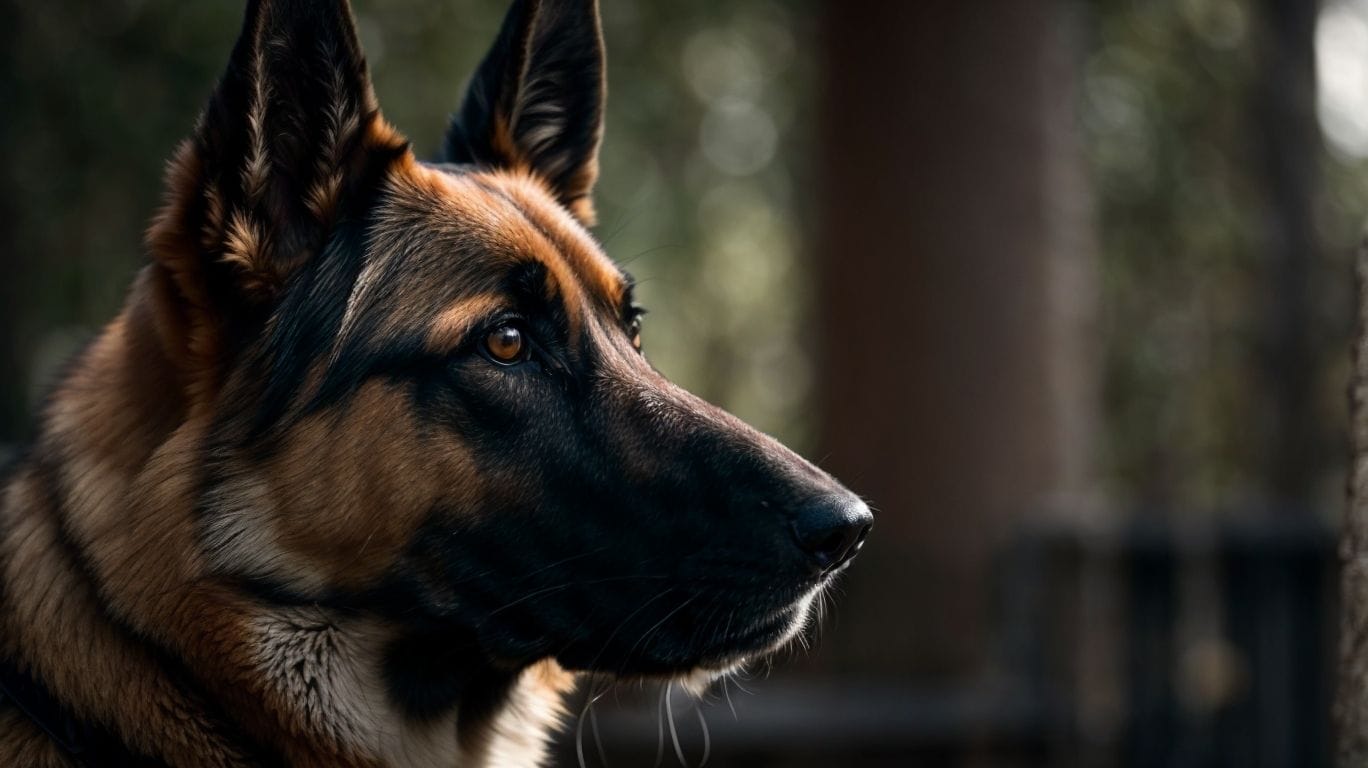
Photo Credits: Petnarnia.Com by Robert Smith
Yes, dogs really can smell fear. Dogs possess an extraordinary sense of smell, enabling them to detect nuanced changes in a person’s body chemistry. When a person experiences fear, their body releases various chemicals like adrenaline, sweat, and pheromones, all of which can be detected by dogs. This remarkable ability stems from their evolutionary background as predators and pack animals. Dogs can perceive fear in humans as well as other animals, allowing them to evaluate potential threats and respond accordingly. Hence, if you are feeling afraid, there is a high likelihood that your dog can sense it.
What Do Dogs Use Their Nose For?
What Do Dogs Use Their Nose For?
Dogs utilize their remarkable sense of smell to explore the world around them, detect scents, and gather information. They rely on their noses for a variety of purposes, such as identifying food, tracking scents, locating objects or people, and even detecting diseases or illnesses in humans. In fact, their sense of smell is highly sensitive, allowing them to distinguish different odors and detect faint scents that humans may not even notice. A dog’s nose plays a key role in its ability to navigate the sensory world, as it has about 300 million olfactory receptors, compared to the approximately 6 million in humans. This superior sense of smell gives dogs an incredible advantage when it comes to detecting and recognizing smells.
How Sensitive Are Dogs’ Sense of Smell?
How Sensitive Are Dogs’ Sense of Smell?
Dogs’ sense of smell is incredibly sensitive, surpassing that of humans by a wide margin. Their noses contain over 300 million olfactory receptors, allowing them to detect scents that are thousands of times weaker than what humans can detect. Their sense of smell is estimated to be between 10,000 to 100,000 times more powerful than ours. This sensitivity enables dogs to detect fear, as well as other emotions, through the chemical signals released by the human body. Dogs’ ability to pick up on these subtle scent changes makes them excellent at detecting fear and providing comfort and support to their owners.
The Science Behind Dogs Smelling Fear
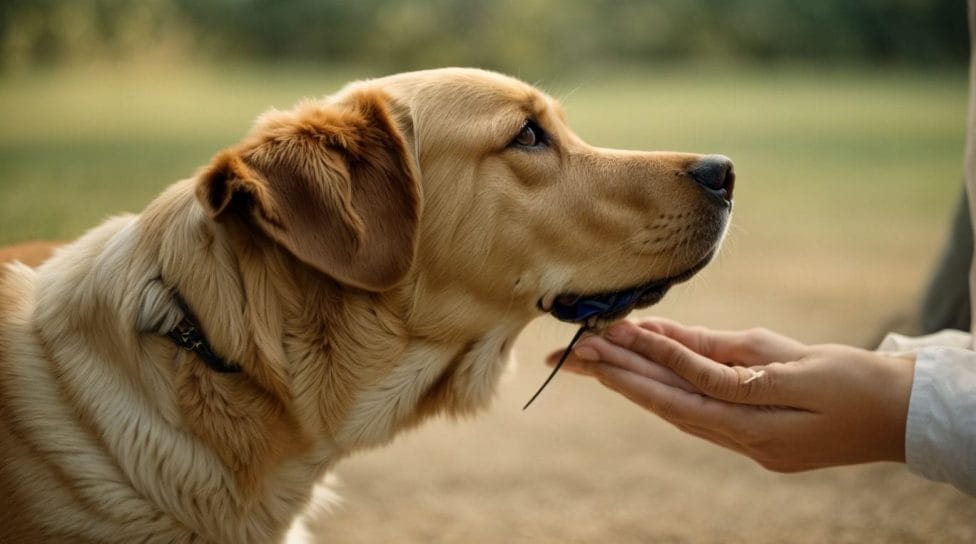
Photo Credits: Petnarnia.Com by Andrew Johnson
The Science Behind Dogs Smelling Fear
Dogs have an incredible sense of smell, and they possess the remarkable ability to detect various emotions and scents, including fear. The science behind this fascinating capability lies in dogs’ highly developed olfactory system, which exceeds that of humans. Dogs possess the capacity to pick up on subtle chemical changes occurring in a person’s body when they are experiencing fear, such as modifications in sweat composition or an elevated heart rate. These remarkable olfactory skills enable them to sense fear and respond accordingly and accurately.
In an inspiring true story, a rescue dog named Max demonstrated his exceptional ability to sense fear. Max detected fear in a child who had become lost in the woods and guided a search party directly to the scared child, ultimately saving their life.
How Does the Dog’s Olfactory System Work?
How Does the Dog’s Olfactory System Work?
The dog’s olfactory system is a remarkable tool that allows them to detect and identify various scents. Dogs have a highly developed sense of smell, with an olfactory system that works uniquely. When a dog inhales, the air passes through their nostrils and into the olfactory epithelium, which is lined with specialized cells called olfactory receptors. These receptors detect and bind to odor molecules, sending signals to the brain for interpretation. The dog’s brain then analyzes the scent and associates it with a particular object or individual. This incredible olfactory system enables dogs to detect fear, among other emotions, in humans.
What Happens in a Dog’s Brain When They Smell Fear?
When dogs smell fear, what happens in their brain? It activates certain areas of their brain related to emotion and threat detection. The amygdala, in particular, plays a key role in processing fear and triggering the appropriate response. Studies have shown that the amygdala shows increased activity in dogs when they are exposed to fear-related odors. This heightened brain activity helps dogs assess whether a situation is dangerous or safe. For example, a true story shared by a dog owner recounts how their dog detected fear in a stranger and exhibited protective behavior, ultimately preventing a potentially dangerous situation.
Evidence of Dogs Detecting Fear
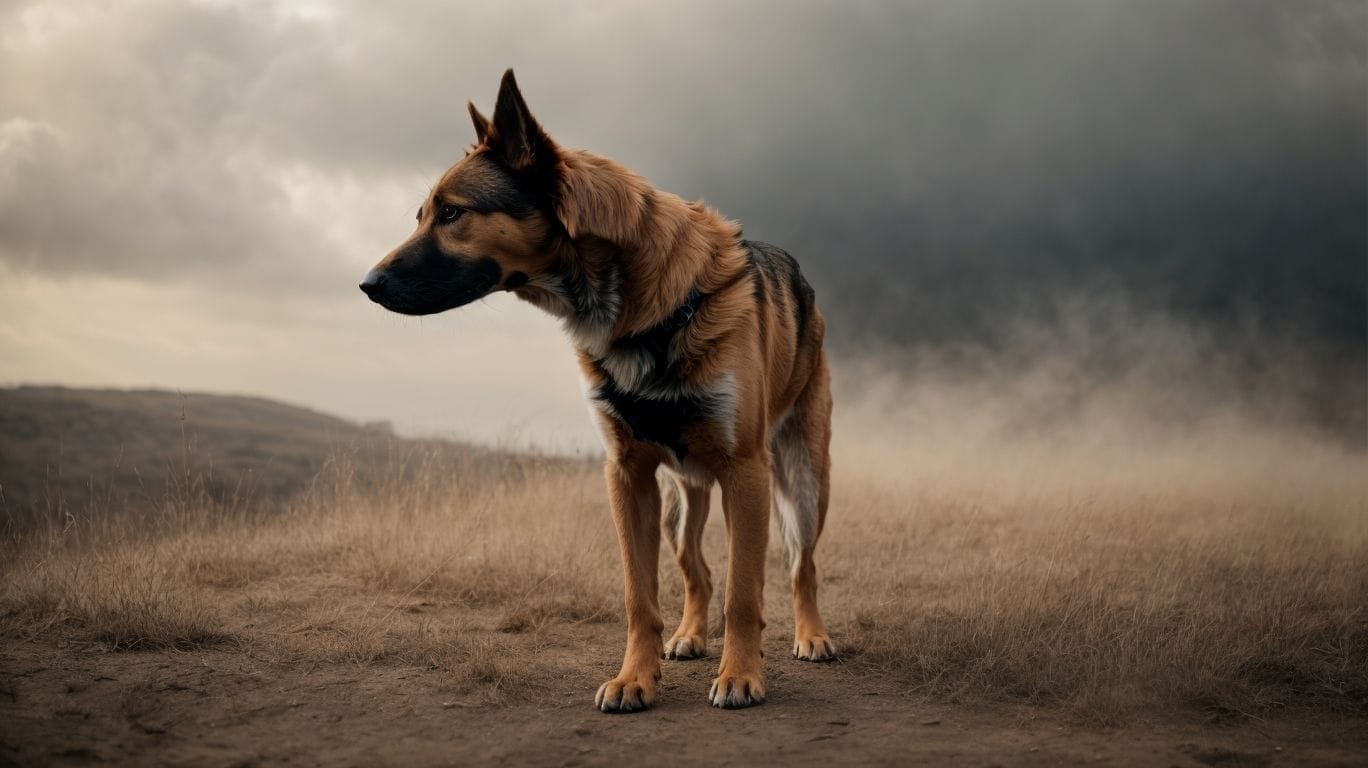
Photo Credits: Petnarnia.Com by Peter Green
When it comes to dogs and their incredible sensory abilities, there’s no doubt that they’re capable of remarkable feats. In this section, we’ll dive into the fascinating evidence of dogs detecting fear. From scientific studies investigating their ability to pick up on fear-inducing scents to the intriguing anecdotes and personal stories shared by dog owners, we’ll explore the various factors that influence how dogs react to fear. Get ready to delve into the captivating world of canine intuition and discover just how exceptional our four-legged friends truly are.
Studies on Dogs’ Ability to Smell Fear
Studies on dogs’ ability to smell fear have provided evidence of their remarkable olfactory capabilities. These studies have shown that dogs can indeed detect fear in humans. For instance, researchers have conducted experiments where they exposed dogs to sweat samples taken from people who were fearful or neutral. The dogs consistently displayed more noticeable reactions when exposed to the fear-related sweat samples, indicating their ability to detect fear through scent. Studies have also explored the neural mechanisms behind this phenomenon, revealing specific brain regions that are activated when dogs smell fear. Understanding dogs’ capacity to sense fear can be valuable in various practical applications, such as training dogs for search and rescue missions or therapy purposes. Pro-tip: Be aware of your emotional state around dogs, as they can pick up on subtle cues and react accordingly.
Anecdotal Evidence and Personal Stories
Anecdotal evidence and personal stories offer significant insights into the capacity of dogs to detect fear.
- Owners share personal accounts of their dogs responding differently to fearful individuals compared to those who are calm.
- Some narrate instances where their dogs exhibit protective behaviors or react aggressively towards fearful individuals.
- These personal experiences strongly suggest that dogs possess the ability to sense fear through their olfactory system.
- While anecdotal evidence holds its value, it is crucial to consider other factors that might influence a dog’s reaction to fear, such as body language and past experiences.
- The combination of scientific studies and personal narratives helps establish a comprehensive understanding of dogs’ capability to smell fear.
Other Factors that Influence Dogs’ Reactions to Fear
- Body Language and Non-Verbal Cues: Dogs are highly perceptive and can pick up on subtle cues from their owners or the environment. They may react differently to fear based on the body language they observe.
- Context and Past Experiences: Dogs’ reactions to fear can be influenced by their past experiences and the context in which the fear is presented. For example, a dog may react more strongly to a fear-inducing stimulus if they have had a traumatic experience in a similar situation in the past.
- Other factors can also influence dogs’ reactions to fear. One such factor is body language and non-verbal cues. Dogs are highly perceptive and can pick up on subtle cues from their owners or the environment. They may react differently to fear based on the body language they observe.
I once had a rescue dog named Max who was terrified of thunderstorms. Whenever a storm approached, he would start trembling and seek comfort in hiding places around the house. Over time, with patience and positive reinforcement, we were able to help him overcome his fear. By gradually exposing him to the sound of thunder and providing him with a safe and comforting environment, his fear diminished, and he became less anxious during storms.
Body Language and Non-Verbal Cues
Body Language and Non-Verbal Cues are crucial elements in how dogs perceive and react to fear. Dogs possess a remarkable ability to pick up on subtle signals, allowing them to comprehend our emotional states by observing human Body Language. They can identify alterations in posture and facial expressions and even detect slight changes in scent that indicate fear. Additionally, dogs excel at interpreting Non-Verbal Cues, such as trembling, freezing, or avoiding eye contact. When interacting with dogs, it is vital to be conscious of our Body Language and Non-Verbal Cues to foster a calm and positive environment. Interestingly, dogs can also establish a strong social bond by detecting fear in other dogs through their Body Language and Non-Verbal Cues. Fun Fact:
Context and Past Experiences
Dogs’ reactions to fear are influenced by context and past experiences.
Context: Dogs rely on their instincts and interpret the situation based on their surroundings. In the context of certain people, objects, or sounds, dogs can be triggered by fear, even if there is no direct threat. Can Dogs Smell Fear?
Past Experiences: Dogs’ reactions to fear can be shaped by previous traumatic events or negative experiences. They may associate certain stimuli with danger and react accordingly.
True story: A friend of mine adopted a rescue dog who had been mistreated in the past. Whenever he heard loud noises or saw unfamiliar people, he would tremble and cower in fear. With love, patience, and positive reinforcement training, my friend was able to create a safe and secure environment for the dog, helping him overcome his fear over time.
Practical Implications and Applications
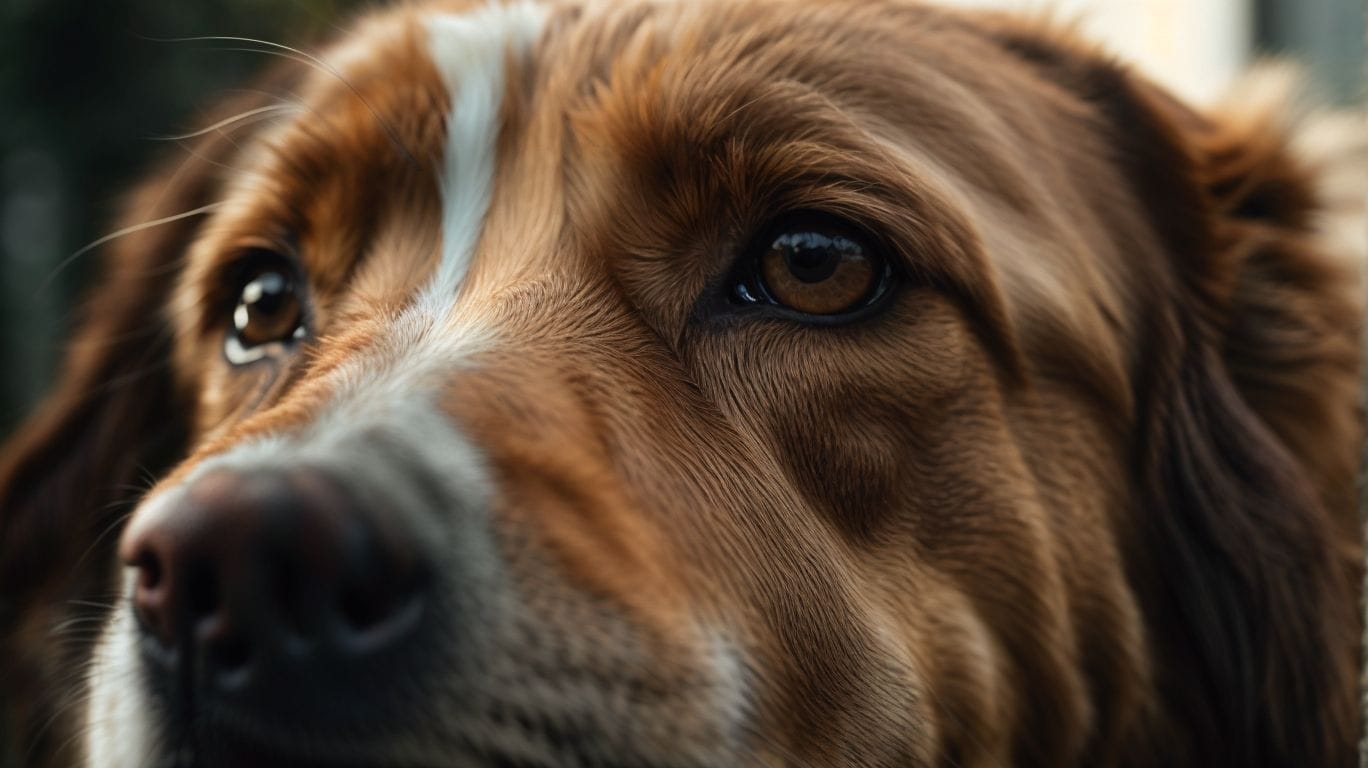
Photo Credits: Petnarnia.Com by George Baker
Understanding the practical implications and applications of dogs being able to smell fear can have significant benefits in various fields.
The understanding and utilization of the practical implications and applications of dogs having the ability to detect fear can bring about noteworthy advantages in diverse fields.
In law enforcement, trained dogs can be employed to detect fear in potential suspects, aiding in criminal investigations. Can Dogs Smell Fear?
In the realm of law enforcement, canines that have been trained to perceive fear can be utilized to identify fear in potential suspects, thereby assisting in criminal investigations.
In therapy, dogs can provide comfort to individuals with anxiety or post-traumatic stress disorder by sensing their fear and providing emotional support.
Within the domain of therapy, dogs possess the capability to offer solace to individuals suffering from anxiety or post-traumatic stress disorder by perceiving their fear and granting them emotional support.
In sports and performance training, knowing that dogs can detect fear can help athletes and performers manage their emotions to achieve better results.
In the realm of sports and performance training, the knowledge that dogs can detect fear can aid athletes and performers in regulating their emotions, thus enabling them to attain enhanced outcomes.
These practical applications demonstrate the valuable role that dogs’ olfactory abilities can play in different contexts.
These pragmatic applications clearly exemplify the valuable role that the olfactory abilities of dogs can play in various situations.
Can Dogs Be Trained to Detect Fear?
Yes, dogs can be trained to detect fear. By employing proper training and conditioning techniques, dogs can acquire the ability to identify and react to the physiological and behavioral indicators connected with fear in humans. This skill is exceptionally advantageous in the case of therapy and service dogs, as they can furnish support and solace to individuals undergoing fear or anxiety. Dogs possess remarkable trainability, and by utilizing appropriate methods, they can be instructed to notify their owners or handlers whenever they perceive fear. This can serve as a valuable resource in aiding individuals in managing their fear and enhancing their emotional well-being.
How Should Dog Owners Handle Fear in Their Dogs?
How should dog owners handle fear in their dogs? Handling fear in dogs requires patience, understanding, and a gentle approach. Here are some steps dog owners can take:
- Create a safe environment: Provide a secure and comfortable space where your dog feels protected.
- Identify triggers: Identify what causes fear in your dog and try to avoid or minimize exposure to those triggers.
- Use positive reinforcement: Reward your dog with treats and praise when they exhibit calm behavior in fearful situations.
- Desensitize and counter-condition: Gradually expose your dog to the fear trigger in a controlled manner, using positive associations to change their emotional response.
- Seek professional help: If your dog’s fear is severe or impacting their quality of life, consult a professional dog trainer or behaviorist.
Pro-tip: Remember, every dog is unique, and handling fear requires individualized approaches. Be patient and consistent, and always prioritize your dog’s well-being.
Some Facts About Can Dogs Smell Fear?
- ✅ Dogs can detect fear through body language and chemical signals. (Source: Science Focus)
- ✅ When humans fear, they tend to sweat more, and dogs can potentially smell those changes in sweat composition. (Source: Wonderopolis)
- ✅ Dogs have a heightened sense of smell that allows them to sense when a person is nervous, anxious, or afraid. (Source: PetMD)
- ✅ A study shows that dogs can distinguish between fear and happiness by responding differently to human odors emitted under different emotional states. (Source: PetMD)
- ✅ Dogs can help humans recognize their emotional states, particularly chronic anxiety, and provide support during times of stress or fear. (Source: PetMD)
